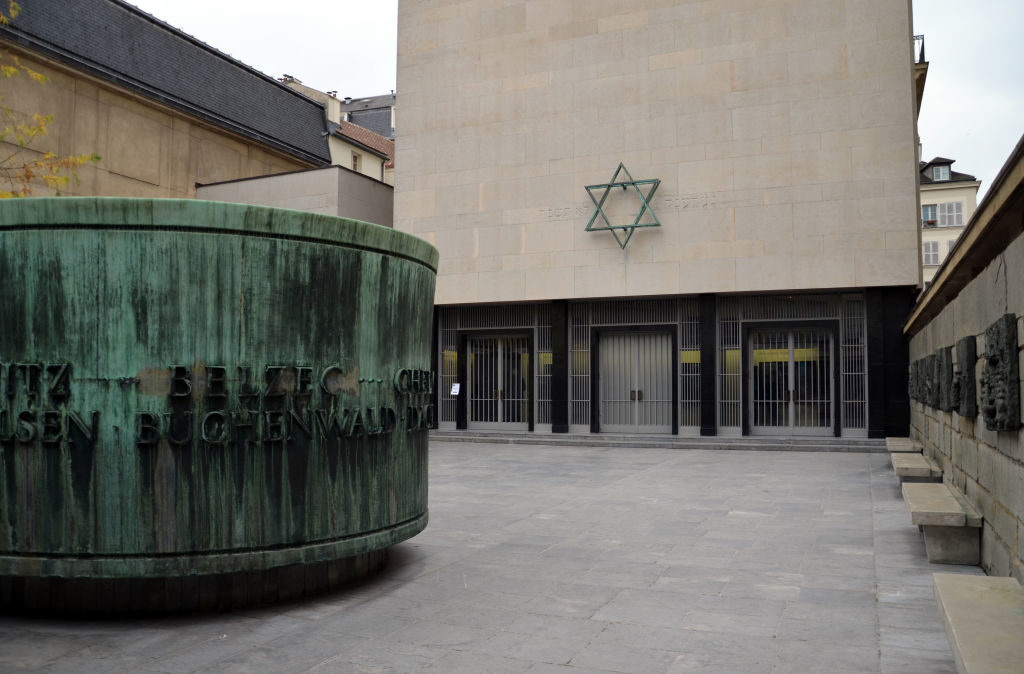Art World
Less Than a Month After the Louvre Hired a Nazi Loot Expert to Investigate Its Collection, She Found 10 Ill-Gotten Works Hiding in Plain Sight
Emmanuelle Polack has identified the works as belonging to the collection of a Jewish lawyer.

Emmanuelle Polack has identified the works as belonging to the collection of a Jewish lawyer.

Naomi Rea

The Louvre could soon be restituting 10 looted works from its collection to the rightful heirs of their former Jewish owner.
Earlier this month, the Paris museum hired an art historian and expert in the French art market during the German Occupation to research its collections. Emmanuelle Polack is tasked with looking into suspect acquisitions made by the museum during the Vichy regime.
Now, Polack has identified 10 works in the Louvre’s collection that belonged to a Jewish lawyer before their forced sale at auction, Le Monde reports. The works are the subject of an official restitution claim from his heirs, Artnet News understands.
Hiring Polack is the latest move by the Louvre to restitute works in its collection that were looted during the Nazi era. In late 2017, it opened two galleries to highlight around 30 orphaned works in its collection as part of an ongoing effort to find their rightful owners, but the move has yielded few results so far.
Polack, who wrote a book on the French art market during World War II, Le Marché de l’art sous l’occupation, has worked with the Louvre before, albeit not on its staff. Last year she organized an exhibition at the Shoah Memorial in Paris on the subject, which included loans from the Louvre as well as the Musée d’Orsay.
The exhibition grabbed headlines when Polack revealed that the works in that show had belonged to a French-Jewish lawyer, Armand Dorville. After his death his art collection was confiscated, and sold at auction.

Memorial de la Shoah in Paris, France. Photo by Sebastian Kunigkeit/picture alliance via Getty Images.
Polack presented documents identifying Dorville’s collection, which included work by Bonnard, Renoir, and Manet, as having been sold at a 1942 auction in Nice as a “Cabinet of a Parisian Amateur.” She revealed that a curator in the Louvre’s paintings department, René Huyghe, had acquired 12 works from that auction for the museum.
Three of those works were loaned to the exhibition. They were drawings by Henri Monnier and Camille Roqueplan from the Louvre, and a Jean-Louis Forain work that is now in the collection of the Musée d’Orsay.
Now, it turns out that a further eight works from that auction are still in the Louvre’s collection: three more Monniers and five works by Constantin Guys. The twelfth work, a bronze by Pierre-Jules Mène, remains at large.
A spokesperson for the Louvre confirmed to Artnet News that an official restitution request was made by the Dorville family in October 2019, and that the case is currently under the investigation of a special task force that reports to the French culture ministry, and the Commission for the Compensation of Victims of Spoliation, which reports to the Prime Minister. Artnet News reached out to Polack for comment but did not immediately hear back.
It is estimated that some 100,000 works of art were either looted by the Nazis or sold under duress during the German occupation of France. During that time, the country’s national museums made a number of acquisitions.
While many of these works were reclaimed by their rightful owners after World War II, the French state held onto around 2,000 works of looted art which remain in museums around the country for safekeeping while they await ownership claims.

Soldiers retrieving three paintings from the Neuschwanstein Castle in Fussen, Germany, where they were a part of the collection looted by the Nazis from conquered countries. Photo: Getty Images.
France has faced criticism over dragging its heels on the restitution of those works. Only around 100 have been returned to their legitimate owners since the 1950s. The Louvre has around 100 works in its galleries, and there are around 200 in storage. A further 500 pieces are dispersed across 130 French museums.
In order to speed up the process of restitution, the French government launched a dedicated task force last year, which is responsible for conducting extensive provenance research into those works and overseeing their return to their rightful heirs.
The task force is led by David Zivie, a civil service program officer for looted art, and it has been given an annual budget of €200,000. The office’s first mission was to investigate artworks formerly in the Dorville Collection, and he tells Artnet News that they are now finishing up their work on the “interesting” case. They are preparing to send on their research to the Commission for the Compensation of Victims of Spoliation, which will recommend an official decision on restitution “after some weeks.”
“We are growing in strength,” Zivie says. “We have started new research missions with different independent researchers, in addition to the team in the Ministry of Culture.” Zivie says they are working on several new cases of the looted works of art in French custody, as well as researching acquisitions made by the museums during the German Occupation of France.
With just 11 works from the Dorville collection located in French museums so far, a question remains as to the whereabouts of the remaining 439 lots from the Dorville auction.
But there is some good news for the heirs already. Today, January 22, Germany is handing over three works from the collection to Dorville’s heirs after they submitted a claim for their return. Two paintings by Jean-Louis Forain, a watercolor titled Lady in an Evening Gown and the oil painting Portrait of a Lady in Profile, were located within the hoard of Cornelius Gurlitt, the son of Nazi-era art dealer Hildebrand Gurlitt. The remaining work, a drawing by Constantin Guys, Amazon with Rearing Horse, had also passed through Hildebrand Gurlitt’s collection before it ended up in a private collection in Southern Germany.